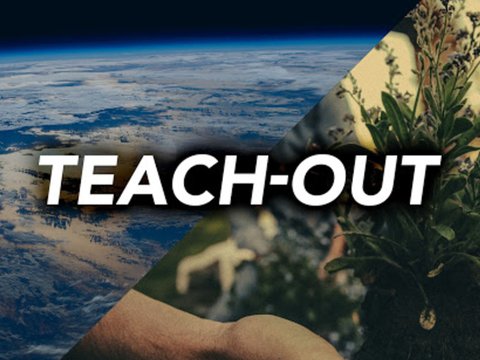The Future of Energy is Interdisciplinary
Todd Allen, Chair of Nuclear Engineering and Radiological Sciences Department in the University of Michigan, makes a case for an interdisciplinary approach to the future of energy.
Excerpt From

Transcript
0:00 hi I'm Todd Allen I'm the chair of the 0:02 nuclear engineering and radiological 0:03 Sciences Department at the University 0:04 Michigan I've been here for about a year 0:06 I also run something called the fastest 0:08 path to zero initiative meaning zero 0:09 carbon how do we get to zero carbon as 0:11 fast as we possibly can in past lifes 0:14 I've been an academic I've been a senior 0:16 executive at a Department of Energy 0:17 National Laboratory I've worked at a 0:20 think-tank 0:20 in DC on clean energy policy I've been a 0:23 staff scientist at a National Laboratory 0:25 did my PhD here at Michigan and I 0:27 started out my professional career as a 0:29 submariner in the US Navy so energy is 0:32 interdisciplinary because energy is 0:34 super important for our lives 0:35 it actually makes our life better and 0:36 our lives are actually interdisciplinary 0:38 when we look at deploying energy there's 0:41 an element of technology to it do we 0:42 build a better tech technology can we 0:44 make a solar cell cheaper there's an 0:46 element of economics to it how do we 0:48 make it cost-effective there's an 0:50 element of public policy around that how 0:52 do we design public policies to help 0:55 people implement cleaner energy 0:56 solutions especially the first time you 0:59 try to implement an energy solution and 1:01 then finally there's a huge social 1:02 science component to this because people 1:04 have to be willing to be hosts in their 1:06 communities and so you add those all up 1:09 and in order to actually understand and 1:11 study and be effective in deploying new 1:14 energy policies you need people with 1:16 technical competence you need people 1:18 with economics you need people with 1:20 public policy and need people that 1:22 understand the social sciences and 1:23 getting them all to work together rather 1:25 than in separate bins is a much more 1:27 effective way to get us to be able to 1:28 deploy clean energy solutions right so 1:32 deployed plane energy has gotten a 1:33 little more complicated even the old 1:35 days when I was young it's very simple 1:37 you'd make electricity and a big stage 1:39 Central Station plant and you just send 1:41 that over transmission wires to people 1:43 but now people can make their own energy 1:45 by putting a solar panel on their roof 1:47 for a company like Google may want their 1:48 own dedicated electricity for their 1:51 server farm and so in order to have 1:54 developed power I mean this scenario you 1:57 really need to involve the host the 1:59 community the person that's the buyer of 2:00 those along with the technologists so 2:03 you're developing things that make sense 2:04 for that specific deployment scenario 2:07 and then on top of that you have people 2:09 that develop public policy that try to 2:11 make those deployments easier 2:13 and that can be very regionally 2:14 different right the what you might do in 2:16 the southeast to deploy solar it could 2:18 be very different from what you do in 2:19 the Midwest just because of the 2:21 difference in the Sun or the weather 2:23 patterns in those case and then back to 2:25 the University of Michigan we have 2:27 academics that understand these issues 2:28 in theory very strong depth and a lot of 2:31 understanding and be able to connect 2:33 those to the people that influence 2:35 public policy therefore allows the great 2:38 work that's done at Michigan to get out 2:39 into the world and so we started this 2:41 fastest path to zero initiative here to 2:43 really try to develop those 2:45 interdisciplinary relationships connect 2:47 the academics here that do great work 2:49 did national NGOs that are developing 2:51 policy and eventually connect up to the 2:53 communities or the deployers of clean 2:55 energy with the people who are building 2:57 this technology and in trying to deploy 2:59 it out in your communities